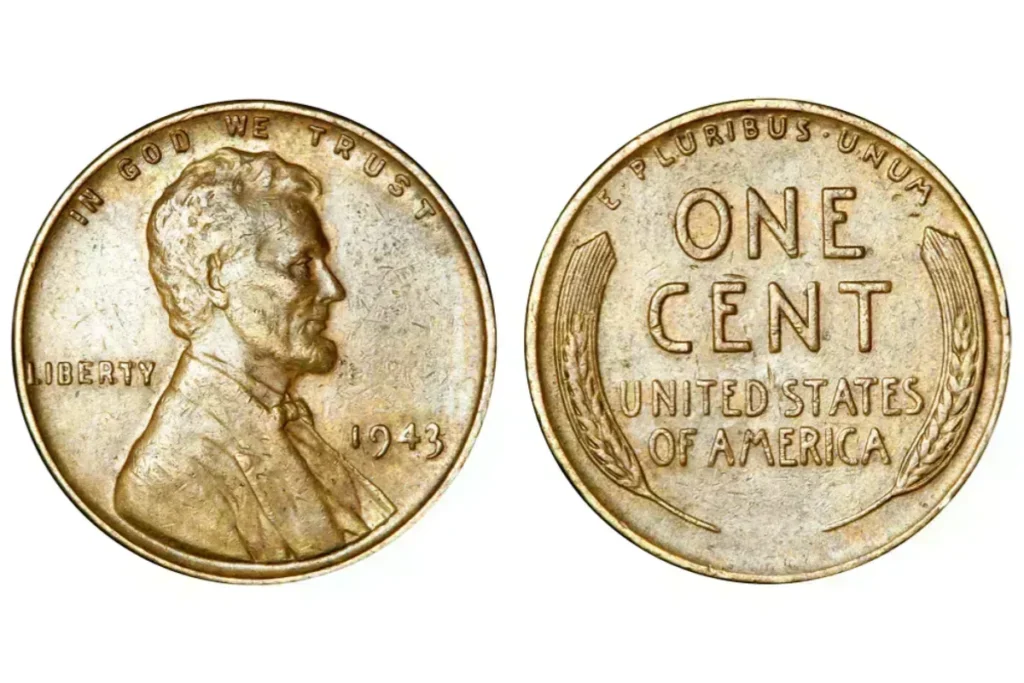During World War II, the U.S. Mint switched to steel pennies to conserve copper for wartime needs, resulting in the unique 1943 Steel Wheat Penny. However, a few pennies
were mistakenly minted in copper that year, creating rare and valuable errors. Today, collectors highly prize these coins, with some selling for hundreds of thousands—even millions—of dollars.
Why Is the 1943 Steel Wheat Penny Valuable?

The 1943 Steel Wheat Penny is unique due to its unusual materials and rare production errors. While billions of steel pennies were minted, a few were mistakenly struck on copper blanks, or “planchets,” typically used before 1943.
These copper variants are exceptionally rare and are some of the most valuable pennies in American numismatics. Additionally, the steel pennies sometimes feature errors like double dies and repunched mintmarks, making them even more desirable to collectors.
Rare and Valuable 1943 Steel Wheat Pennies
Below are five of the rarest 1943 Steel Wheat Pennies, each known for its rarity, minting location, and condition:
1. 1943-D Bronze Wheat Penny
- Minted in: Denver
- Rarity: Known as the “Holy Grail” of penny collecting
- Value: Up to $1.7 million
- This penny was accidentally struck in bronze (copper) instead of steel and is extremely rare, with only a few known examples. Its uniqueness makes it one of the most sought-after coins.
2. 1943-S Bronze Wheat Penny

- Minted in: San Francisco
- Rarity: Only four known examples
- Value: Around $1 million
- Similar to the Denver version, this coin was mistakenly minted on leftover copper planchets and is a significant collectible due to its scarcity.
3. 1943 Copper Wheat Penny
- Minted in: Philadelphia
- Rarity: Fewer than 20 known examples
- Value: Up to $1.75 million
- This copper penny was a minting mistake and is highly valued for its historical importance and extreme rarity.
4. 1943-S Steel Penny (MS67 Grade)
- Minted in: San Francisco
- Rarity: High-grade condition adds value
- Value: Approximately $138,000
- While standard 1943 steel pennies are common, this coin’s flawless strike and exceptional condition make it particularly valuable.
5. 1943-D Steel Penny (MS68 Grade)
- Minted in: Denver
- Rarity: Pristine condition with near-perfect grade
- Value: $59,100
- This Denver-minted steel penny is notable for its near-flawless condition, making it highly collectible and valued among enthusiasts.
The 1943 Steel Wheat Penny holds a special place in American history, showcasing how wartime demands affected everyday items like coins. While many of these steel pennies are common,
the rare copper variations and minting errors have transformed some into million-dollar treasures. Collectors continue to value these coins, not just for their monetary worth but also for the unique stories they tell about America during World War II.
Why was the 1943 Steel Penny made from steel instead of copper?
The U.S. needed copper for wartime efforts, so steel was used to mint pennies in 1943 to save copper resources.
Why are some 1943 pennies made of copper instead of steel?
Some leftover copper blanks were mistakenly used, leading to the production of very rare copper pennies that are highly valuable today.
What does “MS67” or “MS68” mean?
These are coin grades representing the coin’s condition. The higher the grade, the better the condition and value of the coin.
How can I tell if my 1943 penny is rare?
If your 1943 penny is copper instead of steel, it’s likely rare. You can also check for minting errors like double dies or repunched mintmarks.
How much can a rare 1943 Steel or Copper Penny be worth?
Depending on rarity and condition, these pennies can be worth between tens of thousands to over a million dollars.















